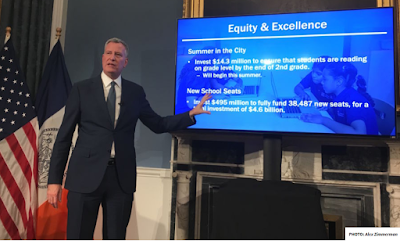Three articles in today’s NY Times well worth reading, with some excerpts below, explore the growing class divide between the private schools for rich children where real personalized learning is provided via small classes and computers are rarely used, as opposed to schools for middle class and poor kids, where ed tech is all the rage, pushed by corporate interests and fauxlanthropists like Gates and Zuckerberg.
For those who want to see the presentation we did at last weekend’s NPE conference on this issue, including a video and power point, check out Outsourcing the classroom to machine learning & ed tech; why parents should resist.
Is the explosion of ed tech in the classroom a massive hoax or a dangerous experiment on kids? Offer your comments below.
“I am convinced the devil lives in our phones.”
SAN FRANCISCO — The people who are closest to a thing are often the most wary of it. Technologists know how phones really work, and many have decided they don’t want their own children anywhere near them.
A wariness that has been slowly brewing is turning into a regionwide consensus: The benefits of screens as a learning tool are overblown, and the risks for addiction and stunting development seem high. … Athena Chavarria, who worked as an executive assistant at Facebook and is now at Mark Zuckerberg’s philanthropic arm, the Chan Zuckerberg Initiative, said: “I am convinced the devil lives in our phones and is wreaking havoc on our children.”… For longtime tech leaders, watching how the tools they built affect their children has felt like a reckoning on their life and work.
Among those is Chris Anderson, the former editor of Wired and now the chief executive of a robotics and drone company. He is also the founder of GeekDad.com.
“On the scale between candy and crack cocaine, it’s closer to crack cocaine,” Mr. Anderson said of screens. …“This is scar tissue talking. We’ve made every mistake in the book, and I think we got it wrong with some of my kids,” Mr. Anderson said. “We glimpsed into the chasm of addiction, and there were some lost years, which we feel bad about.”
His children attended private elementary school, where he saw the administration introduce iPads and smart whiteboards, only to “descend into chaos and then pull back from it all.”
The Digital Gap Between Rich and Poor Kids Is Not What We Expected
America’s public schools are still touting devices with screens — even offering digital-only preschools. The rich are banning screens from class altogether.
The parents in Overland Park, Kan., were fed up. They wanted their children off screens, but they needed strength in numbers. First, because no one wants their kid to be the lone weird one without a phone. And second, because taking the phone away from a middle schooler is actually very, very tough.
“We start the meetings by saying, ‘This is hard, we’re in a new frontier, but who is going to help us?’” said Krista Boan, who is leading a Kansas City-based program called START, which stands for Stand Together And Rethink Technology. “We can’t call our moms about this one.”
For the last six months, at night in school libraries across Overland Park, a suburb of Kansas City, Mo., about 150 parents have been meeting to talk about one thing: how to get their kids off screens….
It could happen that the children of poorer and middle-class parents will be raised by screens, while the children of Silicon Valley’s elite will be going back to wooden toys and the luxury of human interaction….
Technology Is a Huge Social Experiment on Children
Some parents, pediatricians and teachers around the country are pushing back.
“These companies lied to the schools, and they’re lying to the parents,” said Natasha Burgert, a pediatrician in Kansas City. “We’re all getting duped.”…
“Our kids, my kids included, we are subjecting them to one of the biggest social experiments we have seen in a long time,” she said. “What happens to my daughter if she can’t communicate over dinner — how is she going to find a spouse? How is she going to interview for a job?”
As those working to build products become more wary, the business of getting screens in front of kids is booming. Apple and Google compete ferociously to get products into schools and target students at an early age, when brand loyalty begins to form.
Google published a case study of its work with the Hoover City, Ala., school district, saying technology equips students “with skills of the future.”
The concluded that its own Chromebooks and Google tools changed lives: “The district leaders believe in preparing students for success by teaching them the skills, knowledge, and behaviors they need to become responsible citizens in the global community.”
Dr. Freed, though, argues these tools are too relied upon in schools for low-income children. And he sees the divide every day as he meets tech-addicted children of middle and low-income families.
“For a lot of kids in Antioch, those schools don’t have the resources for extracurricular activities, and their parents can’t afford nannies,” Dr. Freed said. He said the knowledge gap around tech’s danger is enormous.
Dr. Freed and 200 other psychologists petitioned the American Psychological Association in August to formally condemn the work psychologists are doing with persuasive design for tech platforms that are designed for children.
“Once it sinks its teeth into these kids, it’s really hard,” Dr. Freed said.
Silicon Valley Nannies Are Phone Police for Kids
Child care contracts now demand that nannies hide phones, tablets, computers and TVs from their charges.


















